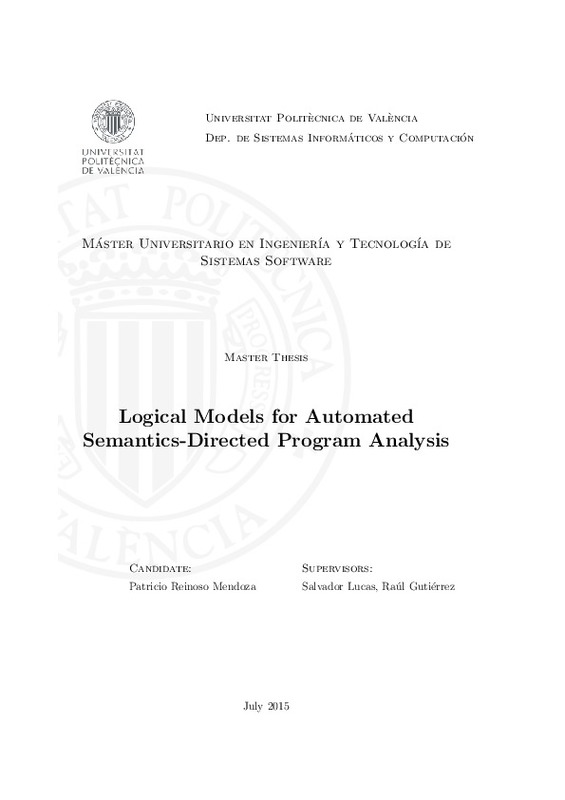JavaScript is disabled for your browser. Some features of this site may not work without it.
Buscar en RiuNet
Listar
Mi cuenta
Estadísticas
Ayuda RiuNet
Admin. UPV
Logical models for automated semantics-directed program analysis
Mostrar el registro completo del ítem
Reinoso Mendoza, EP. (2015). Logical models for automated semantics-directed program analysis. http://hdl.handle.net/10251/75034
Por favor, use este identificador para citar o enlazar este ítem: http://hdl.handle.net/10251/75034
Ficheros en el ítem
Metadatos del ítem
| Título: | Logical models for automated semantics-directed program analysis | |||
| Autor: | Reinoso Mendoza, Efren Patricio | |||
| Director(es): | ||||
| Entidad UPV: |
|
|||
| Fecha acto/lectura: |
|
|||
| Resumen: |
[EN]
In Computer Science and Software Engineering, even at this time, when huge hardware and software resources are available, the problem of checking correctness of an specific piece of software is a very complicated one. ...[+]
|
|||
| Palabras clave: |
|
|||
| Derechos de uso: | Reconocimiento - No comercial - Sin obra derivada (by-nc-nd) | |||
| Editorial: |
|
|||
| Titulación: |
|
|||
| Tipo: |
|







